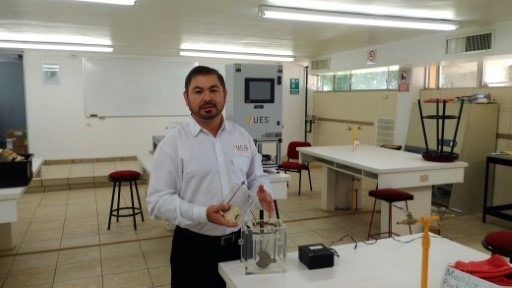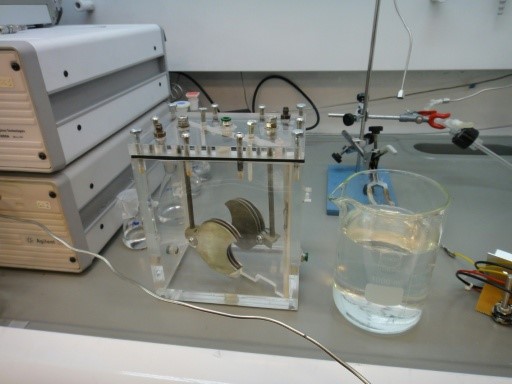
Showering is often recognized as one of the cradles of new ideas, but few are willing to fess up if their inspiration originated from urination. Mechanical engineer Gabriel Luna-Sandoval is one such exception. In the process of relieving himself nine years ago, an idea took root in mind of the then 32-year-old researcher from the University of Sonora State, in northern Mexico: why hasn’t anyone figured out a way to transform urine into biogas as a means of creating an alternative and sustainable way to heat showers or cook? Nine years later, Luna-Sandoval has successfully extracted oxygen from urine, establishing the basis for a new sustainable source of clean energy.
Luna-Sandoval aimed to create a device that capable of producing a clean source of energy that would replace the liquefied petroleum gas commonly used in Mexicans homes. The resulting prototype houses urine in a 20-square-centimenter patented acrylic container outfitted with stainless steel electrodes. Transmitting electricity from the electrodes to the urine causes oxygen and hydrogen to separate, with the latter becoming a biogas.
An up-scaled version of the prototype would then be attached a home’s pipes, funneling freshly created biogas to the boiler, where it can then heat the water. Because biogas is odorless, users won’t have to worry about being drenched with the smell of urine, while at the same time, a tight seal prevents the smell of urine from escaping the container itself.

But is this practical? Luna-Sandoval asserts that an adult produces 1.4 liters of urine per day, equating to about 25,550 liters in the span of 50 years. Considering his device requires only 13 to 21 mm of urine for a 15-minute hot shower, or 70 to 130 mm to cook beans for an hour, then it’s theoretically possible to fill the container in the morning and re-use it later in the day.
Odd as the invention may seem to those of more prudish persuasions, the concept has also caught the attention of the Mexican Space Agency as the basis for a new life-support system that could aid astronauts out on spacewalks by creating spare oxygen supplies from their bodily fluid. Another Mexican government agency, the National Science and Technology Council, featured Luna-Sandoval’s design in their official publication. Ulises Cano, a member of the National Researchers System of Mexico, views Luna-Sandoval’s like something that’s “not absurd,” that may be technically viable if it’s economical.
Source: Phys.org
Advertisement
Learn more about Electronic Products Magazine





